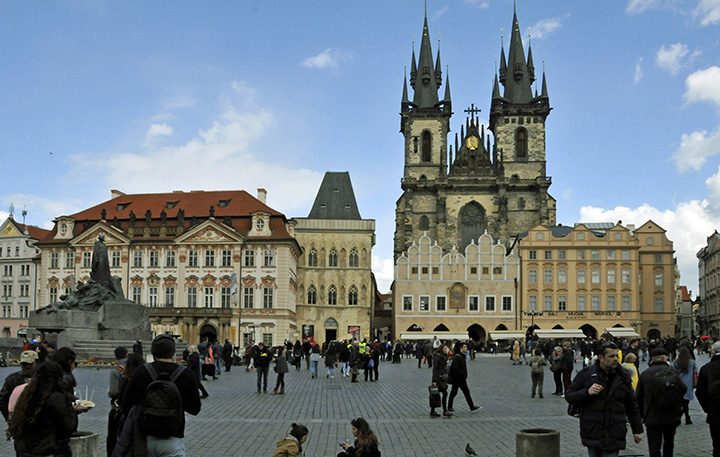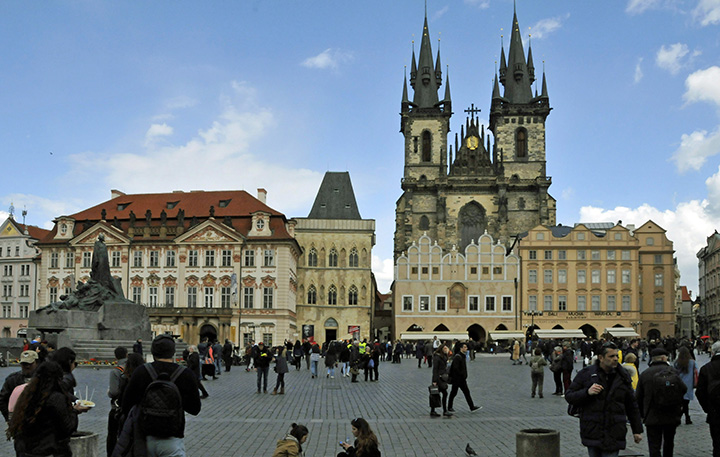
Prague’s Old Town Square is one of the most colorful of such plazas in Europe. It is dominated by a church and a monument, both reflecting a period of religious reform unknown to most Americans.
During the Middle Ages, Old Town Square was anchored by Prague’s Town Hall, acquired in 1338. In 1385, the Catholic Church began building the twin-spired Church of Our Lady Before Tyn along the eastern side of the square. Like some other Gothic churches, one tower was intentionally made larger than the other, reportedly showing that only God is perfect.
Jan Hus, born in 1369, at an early age moved to Prague, where he became a priest. One hundred years before Martin Luther, Hus preached against the excesses of the Church and was burned at the stake for his unrecanted teachings on July 6, 1415. His executioners reportedly said they were cooking his goose, a cruel play on the meaning of his last name. Hus’ outraged followers, called Hussites, started a rebellion against the Church that became known as the Hussite Wars. The Hussites took over the Tyn Church as their main church and created a golden chalice as their symbol, signifying that all congregants could partake of the Eucharist wine. In 1621, after a series of battles, Catholic forces finally defeated the Hussites and regained control of Tyn Church. They melted the Hussite chalice and used the gold to create a radiant figure of Mary and the baby Jesus, which they mounted between the towers of Tyn Church.
On July 6, 1915, exactly 500 years after Hus’ killing, the residents of Prague unveiled a massive monument in Old Town Square in his honor. The monument shows Hus looking toward Tyn Church, surrounded on one side by warriors and on the other by Hussites forced to leave Prague in 1621.




